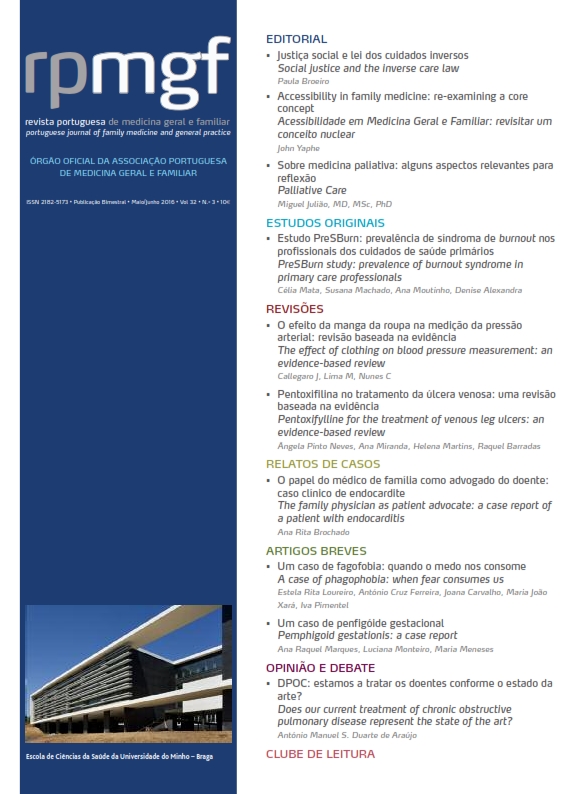The effect of clothing on blood pressure measurement: an evidence-based review
DOI:
https://doi.org/10.32385/rpmgf.v32i3.11790Keywords:
Blood Pressure Measurement, ClothingAbstract
Objectives: To review the available evidence comparing measurement of blood pressure made over clothing to measurements made on a bare arm. Data sources: PubMed, SciELO, Cochrane Library, LILACS, BIREME, TRIP Database, Bandolier, Index de Revistas Médicas Portuguesas. Methods: A search was made for meta-analyses, reviews, and randomized controlled clinical trials in English and Portuguese with no limits set on the date of publication, using the MeSH terms blood pressure determination and clothing, and in Portuguese ‘medição da pressão arterial’ e ‘roupa’. We used the Strength of Recommendation Taxonomy (SORT) scale of American Family Physician to assign levels of evidence and strength of recommendations. Results: We found 69 articles. Five were excluded as duplicates, 53 were excluded after the assessing the title because the article was not directly related to the subject of this review and five were excluded after reading the abstract. The six articles selected for assessment met the inclusion criteria for this review. These were all controlled clinical trials with a total of 1,213 individuals studied. Discussion: The studies found no statistically significant differences between both systolic and diastolic blood pressure measurements, comparing blood pressure measurements made on a bare arm and over a sleeve. Although one article found differences in a group of patients with high blood pressure, later studies showed no significant differences in this group.Downloads
Downloads
Published
Issue
Section
License
The authors will assign to the RPMGF the sole right to publish and distribute the content of the manuscript specified in this declaration via physical, electronic, broadcasting or any other medium that may come into existence. They also grant the RPMGF the right to use and exploit this manuscript, in particular by assigning, selling or licensing its content. This permission is permanent and takes effect from the moment the manuscript is submitted, has the maximum duration allowed by applicable Portuguese or international law and is of worldwide scope. The authors further declare that this assignment is made free of charge. If the RPMGF informs the authors that it is not going to publish their manuscript, the exclusive assignment of rights ceases forthwith.
The authors authorise the RPMGF (or any entity it may appoint) to act on their behalf when it believes that copyright may have been infringed.





